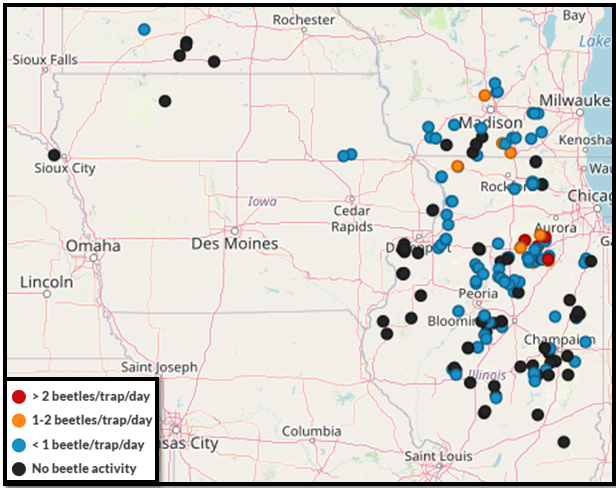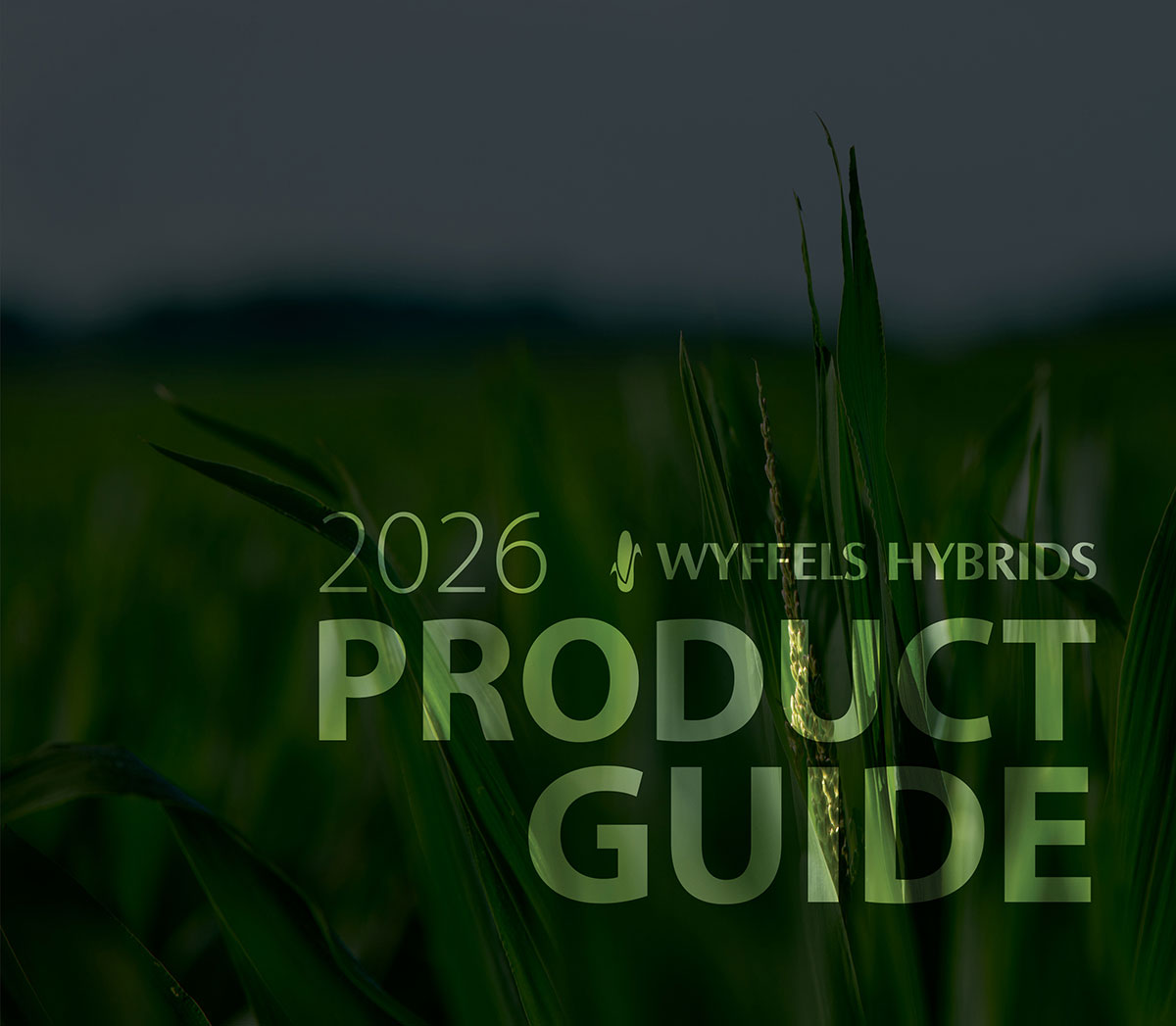Selecting and placing hybrids is one of the most important decisions corn growers make each year. Successful hybrid selection starts with knowledge of the past pest and disease pressure in your fields. Specifically, corn rootworms (CRW) pose a significant threat to yield and profit, making it a pest that cannot be ignored. Understanding the level of risk from corn rootworm in your area and specific fields will help you choose the best tools and hybrids to lower risk and maximize profit.
Knowledge is power
Corn rootworm pressure, and the risk of rootworm feeding, is very hard to predict from year to year. The risk of significant rootworm feeding depends on many factors, some of which are hard to measure. There are actions a corn grower can and should take to better understand the risk in their specific fields. Past field history is one predictor of future risk—continuous corn fields are typically at a higher risk than first year corn fields.
The best way to predict rootworm risk the following year is to monitor corn rootworm beetle activity during the growing season. Wyffels has conducted a rootworm beetle monitoring program the last nine years to better understand the rootworm pressure in our marketing area and to help our customers make better decisions.
University and extension research has established thresholds for the number of beetles/trap/day that lead to significant damage the following year. According to Iowa State University, fields that recorded peak beetle activity at or above 2 beetles/trap/day are at a high risk of damage the following year.
Assessing risk for 2023
In 2022, Wyffels monitored 627 fields for adult rootworm activity. Traps were placed in corn fields to monitor northern and western rootworm beetle levels in first year and continuous corn. Traps were also placed in soybean fields to measure the population of the western corn rootworm variant that can affect corn planted after soybeans.
The bar charts below show peak beetle activity across soybeans, continuous corn and first year corn fields over the last three years.
First Year Corn Fields. In 2022, 80% of fields had very little beetle activity while 9% of fields recorded levels over threshold. Even though a majority of fields are still under threshold, with a slight decrease in pressure from 2021, this is something we’ll have to continue to monitor closely. This is a case where broad management decisions without more knowledge poses a risk, so taking efforts to better understand risk in these fields will be important going forward.
Continuous Corn Fields. Beetle activity in continuous corn fields was much greater with nearly half of the fields being over threshold and another 27% near threshold. Continuous corn has continued to show the greatest increase in pressure over recent years, and is a situation that will require more intense CRW management going forward. We’ll dive deeper into managing continuous corn fields later in this article, but populations are increasing to a level in some fields that we can’t successfully continue without a change in management.
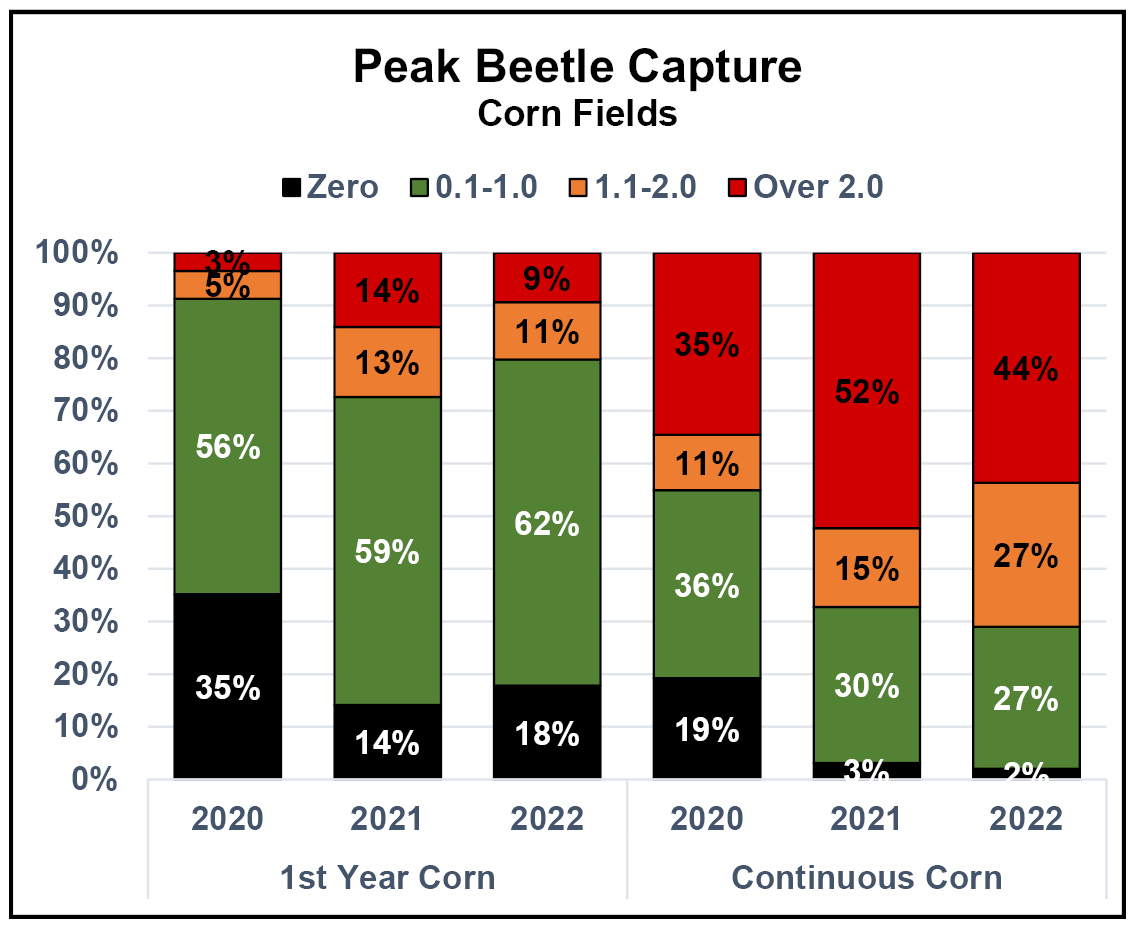
Soybean Fields. When monitoring soybean fields, we are primarily looking for the western CRW variant that lays its eggs in soybean fields to hatch in a corn field the following year. It’s important to note, this is not an indicator of northern CRW beetles with extended diapause, which lay their eggs in corn fields and lay dormant for two years as another way to get around crop rotation. As you see in the chart, 91% of soybean fields monitored showed very little beetle activity with 33% of fields never capturing a beetle. Pressure in rotated fields has been relatively stable in recent years. Continued monitoring will help us predict future risk, but right now these are mostly low risk acres.
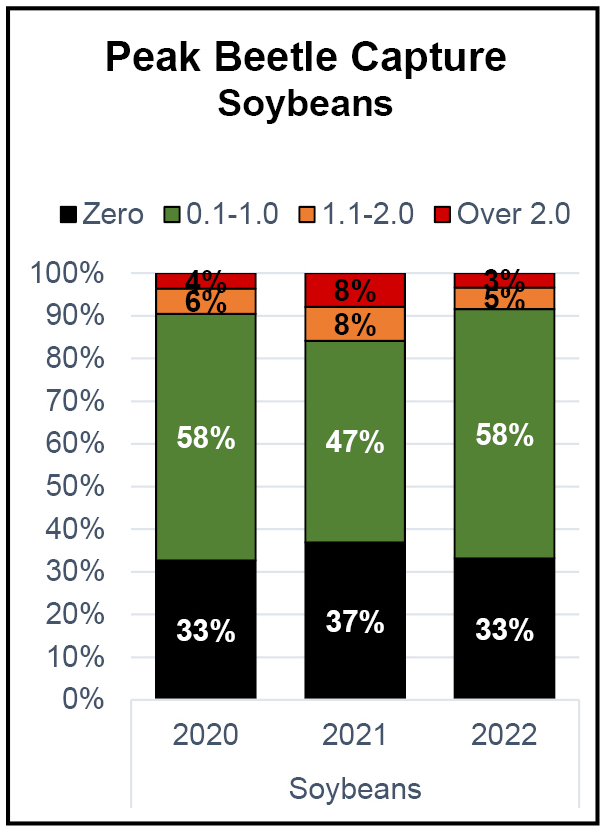
What’s happening locally?
While the information above gives great indications on the general trends we’re seeing across the Central Corn Belt, we know that CRW pressure is very local. What’s happening in a field 50 miles away isn’t a perfect indicator of what’s happening in your field. For that reason, it’s important to understand the pressure as locally as possible. The best way to predict rootworm risk the following year is to monitor corn rootworm beetle activity in your fields. If you would like to participate in the CRW monitoring program in 2023, please contact your Wyffels Seed Representative.
Another way you can see more local results is to view the live results of our monitoring program on Wyffels.com. Throughout the summer we take the results of our monitoring program and post them on our website, so you can zoom in on the map to your local area and see the pressure we’ve observed in that area. We’ve included photos of those maps on the following page, but you can find the interactive maps on Wyffels.com.
Are traits still effective?
Traditional Bt CRW traits are still providing good protection in most fields with moderate levels of CRW pressure. However, Wyffels observed some fields with higher-than-expected root feeding on hybrids with a CRW trait in 2022. Often times these were long term continuous corn fields that had extreme rootworm pressure. In these cases it is difficult to determine if the feeding was due to ineffectiveness of the traits or if the traits were simply being overwhelmed by high populations. CRW populations have been identified with resistance or cross-resistance to the Bt toxins in some CRW traits, but it is hard to know how widespread this resistance is.
A new CRW trait called SmartStax® PRO stacks the traditional Bt CRW events with new RNAi technology to provide effective control of CRW larvae. To kill the CRW, the larvae must feed on the roots, so some root feeding still may occur. This trait has shown excellent effectiveness in moderate-to-heavy CRW pressure.
One important note: If you experienced root damage on a field planted to a hybrid with a CRW trait, you should not expect to have adequate control from a CRW trait in 2023. Whether from ineffectiveness or extreme populations, we must deploy different management strategies on these acres. The first option is to rotate to soybeans to knock back the CRW population and reset the clock. If the field must go back to corn, we can’t rely on traits alone. Even though SmartStax PRO would be effective at killing CRW in these situations, planting SmartStax PRO in these fields will still result in some root feeding, and is not a good resistance management strategy.
Making Plans for 2023
The ultimate goal of the CRW beetle monitoring is to mitigate risk of CRW damage and to protect yield potential. One thing has become clear over the last few years: The days are gone where the only decision we have to make is what trait to use based on the crop history. Managing CRW now involves gathering a lot more information and having more knowledge of the CRW pressure as locally as possible. If we know previous pressure, we’re able to be more confident in our management decisions going forward.
We also know we cannot rely on traits alone. We must look at all the tools for CRW management and deploy the right tools in the right situation. The use of CRW traits are one tool, but we must also consider the use of proven soil applied insecticides, adult beetle control, and crop rotation.
We have developed a decision table below that helps you determine the right management practice for each field based on the history and CRW beetle pressure in that specific field. You will also find recommendations in cases where the CRW beetle pressure is unknown. If you have questions or would like to discuss your plan, we encourage you to reach out to your Wyffels Seed Representative.
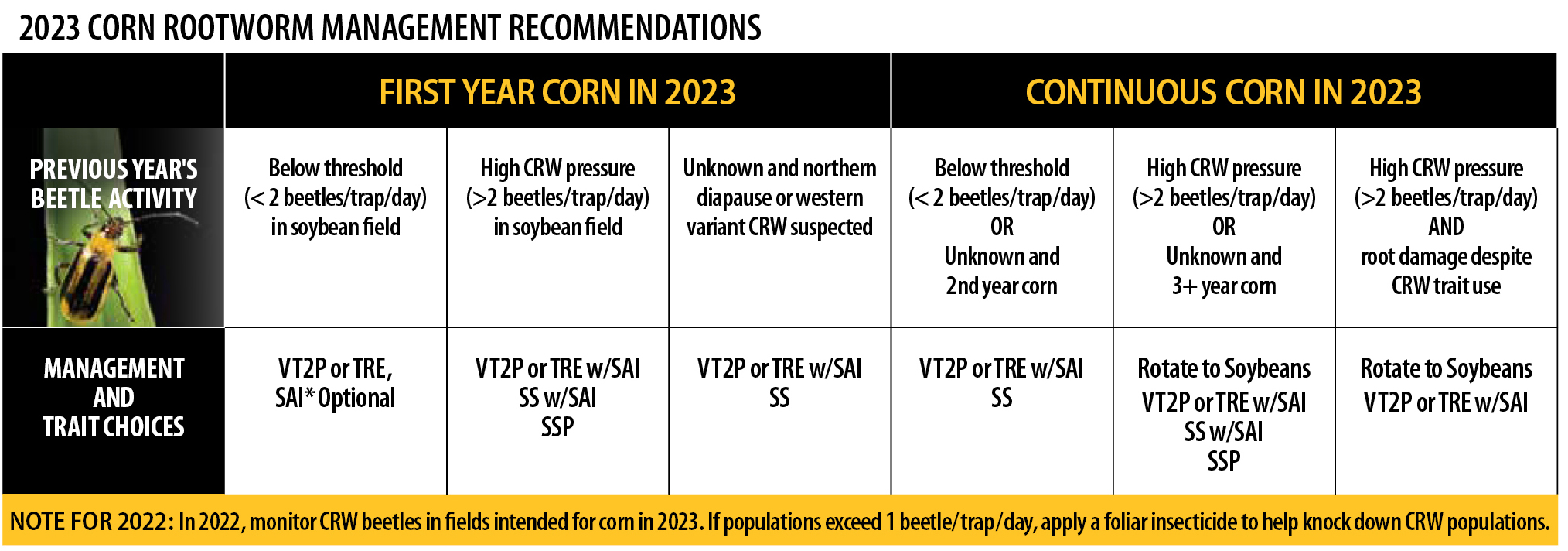
CRW Beetle Activity Maps
These maps represent beetle activity measured in corn and soybean fields in 2022, and serve as a guide for risk of rootworm feeding in corn fields in 2023.
CRW Monitoring resuls in Corn Fields
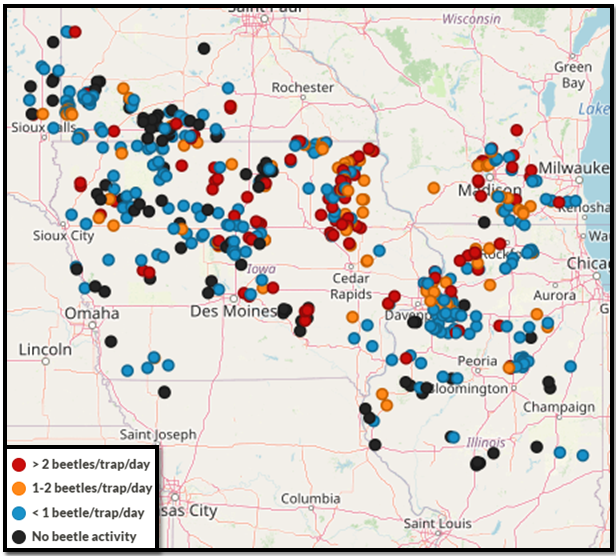
CRW Monitoring resuls in Soybean Fields
